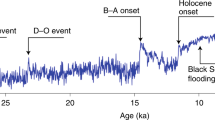Abstract
Geoindicators are high-resolution measures of short-term (<100 years) surface or near-surface changes in earth processes, and phenomena that are significant for environmental monitoring and assessment. They are based on standard concepts and procedures and can be used to track changes in fluvial, coastal, desert, mountain, permafrost and other terrestrial areas. Geoindicators assess both catastrophic events and those that are more gradual, but evident within a human lifespan. Most deal with changes on the landscape (0.1–10 km) and meso-scales (10–100 km), but some, such as relative sea level and volcanic unrest, have regional and global dimensions. Some are complex and costly to measure, others are relatively simple and easy to apply. Geoindicators can also be used to unravel trends over the past few centuries and longer through paleoenvironmental research, thus providing the important baselines against which human-induced and natural stresses can be better understood. Geoindicators have been designed by the International Union of Geological Sciences as an aid to state-of-the-environment reporting and long-term ecological monitoring.
Similar content being viewed by others
Author information
Authors and Affiliations
Additional information
Received: 26 July 1996 / Accepted: 1 November 1996
Rights and permissions
About this article
Cite this article
Berger, A. Assessing rapid environmental change using geoindicators. Environmental Geology 32, 36–44 (1997). https://doi.org/10.1007/s002540050191
Issue Date:
DOI: https://doi.org/10.1007/s002540050191




